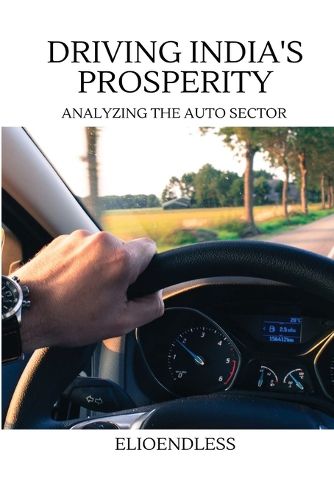Readings Newsletter
Become a Readings Member to make your shopping experience even easier.
Sign in or sign up for free!
You’re not far away from qualifying for FREE standard shipping within Australia
You’ve qualified for FREE standard shipping within Australia
The cart is loading…






This title is printed to order. This book may have been self-published. If so, we cannot guarantee the quality of the content. In the main most books will have gone through the editing process however some may not. We therefore suggest that you be aware of this before ordering this book. If in doubt check either the author or publisher’s details as we are unable to accept any returns unless they are faulty. Please contact us if you have any questions.
In the modern competitive world, finance serves as the cornerstone for all operational activities within a business. The success of a country's economic development largely hinges on the corporate sector's performance. Financial analysis involves the identification of a firm's financial strengths and weaknesses, with its nature varying according to its intended purpose. Trade creditors seek to assess the firm's ability to meet short-term obligations, whereas loan creditors are concerned with the firm's long-term solvency and survival. Management stakeholders, on the other hand, focus on the firm's profitability, which depends on its capacity to generate cash for interest payments, principal repayment, and the interplay between debt and equity in its capital structure.
The Indian Automobile sector holds a formidable position in the global market. India, a renowned outsourcing hub for the automobile and auto component industry, previously received limited attention before liberalization. In 1991, a new era began with the de-licensing of the industrial sector and the subsequent opening up to 100 percent foreign direct investment (FDI) in the sector. The Indian Government's priorities underwent a significant transformation after liberalizing the country's economy, as it introduced various incentives and tax exemptions, resulting in substantial job creation. The industry seamlessly transitioned, gaining recognition from the World Trade Organization due to its extensive forward and backward linkages with the broader economy.
Today, India's automobile industry offers a diverse range of products, including commercial vehicles, motorcycles, passenger cars, scooters, three-wheelers, and tractors. The increased purchasing power of the middle class, coupled with the robust economic growth of the past decade, has attracted leading foreign automobile manufacturers to our market. This has not only elevated per capita income but has also given rise to income inequality.
$9.00 standard shipping within Australia
FREE standard shipping within Australia for orders over $100.00
Express & International shipping calculated at checkout
This title is printed to order. This book may have been self-published. If so, we cannot guarantee the quality of the content. In the main most books will have gone through the editing process however some may not. We therefore suggest that you be aware of this before ordering this book. If in doubt check either the author or publisher’s details as we are unable to accept any returns unless they are faulty. Please contact us if you have any questions.
In the modern competitive world, finance serves as the cornerstone for all operational activities within a business. The success of a country's economic development largely hinges on the corporate sector's performance. Financial analysis involves the identification of a firm's financial strengths and weaknesses, with its nature varying according to its intended purpose. Trade creditors seek to assess the firm's ability to meet short-term obligations, whereas loan creditors are concerned with the firm's long-term solvency and survival. Management stakeholders, on the other hand, focus on the firm's profitability, which depends on its capacity to generate cash for interest payments, principal repayment, and the interplay between debt and equity in its capital structure.
The Indian Automobile sector holds a formidable position in the global market. India, a renowned outsourcing hub for the automobile and auto component industry, previously received limited attention before liberalization. In 1991, a new era began with the de-licensing of the industrial sector and the subsequent opening up to 100 percent foreign direct investment (FDI) in the sector. The Indian Government's priorities underwent a significant transformation after liberalizing the country's economy, as it introduced various incentives and tax exemptions, resulting in substantial job creation. The industry seamlessly transitioned, gaining recognition from the World Trade Organization due to its extensive forward and backward linkages with the broader economy.
Today, India's automobile industry offers a diverse range of products, including commercial vehicles, motorcycles, passenger cars, scooters, three-wheelers, and tractors. The increased purchasing power of the middle class, coupled with the robust economic growth of the past decade, has attracted leading foreign automobile manufacturers to our market. This has not only elevated per capita income but has also given rise to income inequality.